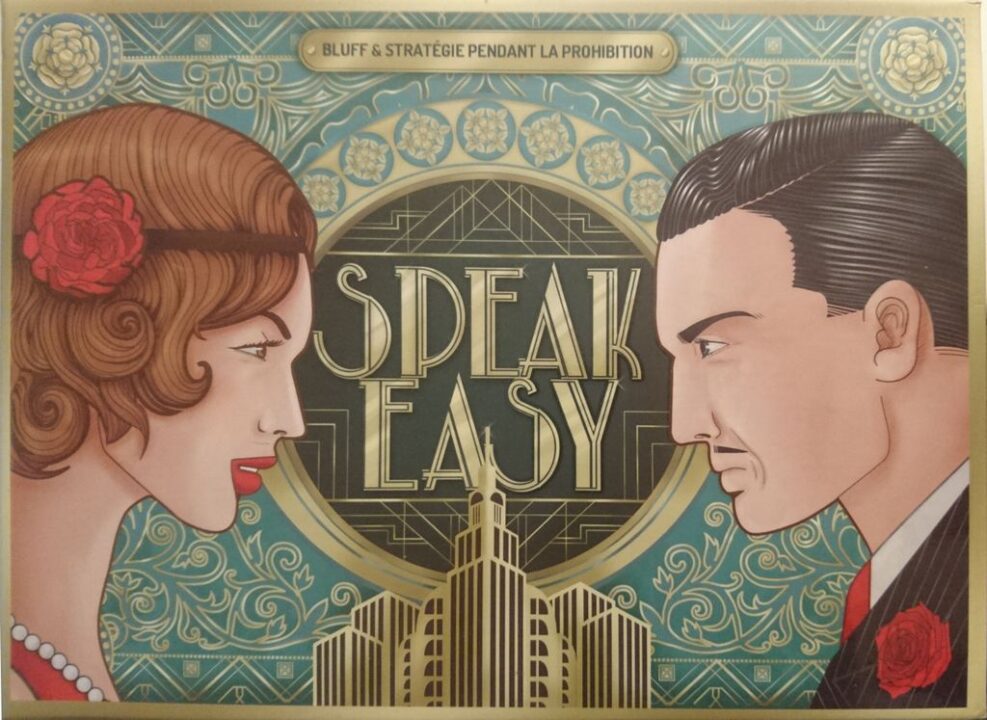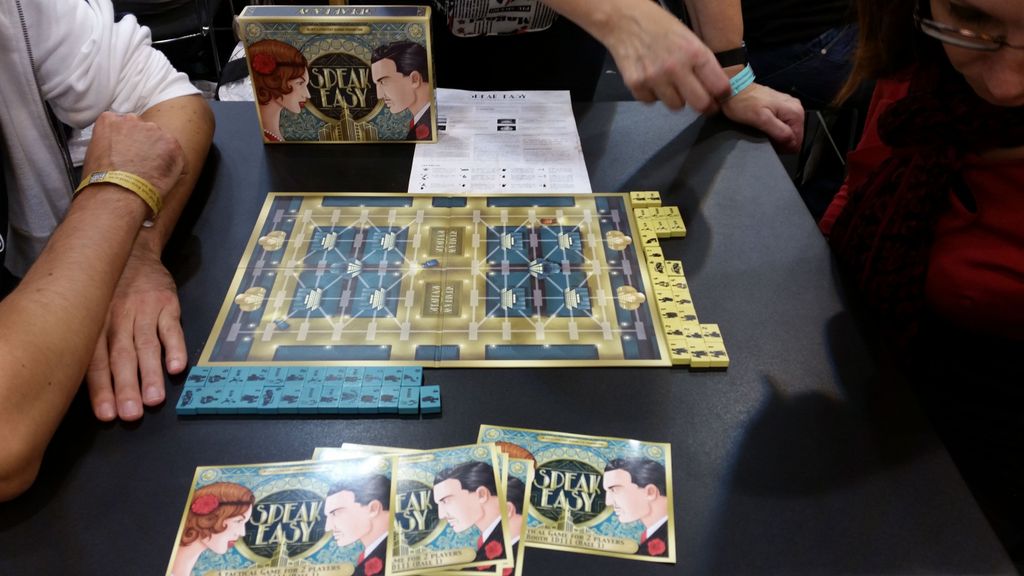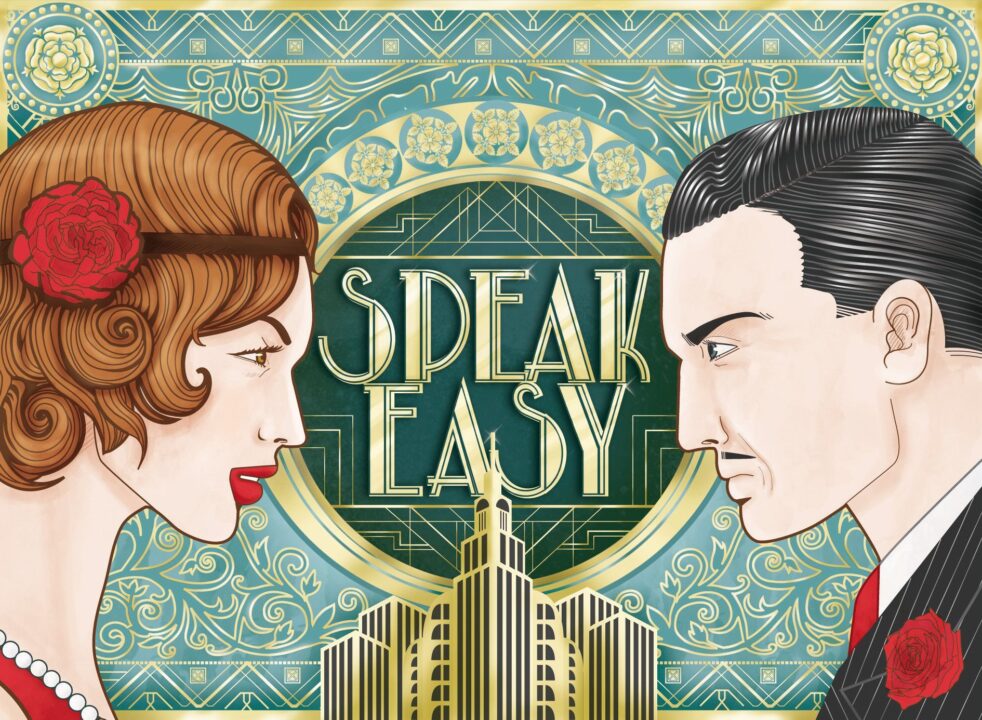Welcome, dear board game enthusiasts! Today, I’m jazzed to talk about a gem called Speakeasy. This review will dive into its gameplay mechanics, theme and immersion, player interaction, and balance and fairness. If you’re curious whether this 1920s-inspired game deserves a spot on your shelf, stick around!
How It Plays
Setting up
First, set out the game board. Deal role cards to each player, assigning them a unique persona in the 1920s speakeasy. Shuffle the deck of event cards and place them in the center. Give each player their starting coins and item tokens.
Gameplay
Players take turns drawing event cards and making decisions based on their roles. Use strategy to collect items, negotiate with other players, and avoid the authorities. Luck can play a part, so stay sharp and adapt your plans.
Winning the game
The game ends when the event deck is exhausted. Players tally their collected items and coins. The player with the most valuable combination of items and coins claims victory. It’s a mix of cunning, strategy, and a bit of luck!
Want to know more? Read our extensive strategy guide for Speakeasy.
Gameplay Mechanics in Speakeasy
Alright, let’s talk about the nuts and bolts of Speakeasy. This game is like a jazz bar in the 1920s – it’s got style, it’s got intrigue, and it’s a bit of a wild ride. The board is a map of a prohibition-era city, and each player takes on the role of a mobster trying to control the most turf. Classic stuff, right?
What makes Speakeasy interesting is its mix of strategy and social interaction. You’ll spend a lot of time making deals, backstabbing, and bluffing your buddies. Imagine a poker night but with more plotting and a lot less money involved. The game’s currency is influence, and you’ll need a lot of it to win. You earn influence through clever moves and alliances, but lose it just as fast if you’re not careful.
The mechanics are tight. There’s a bidding phase, an action phase, and a resolution phase. It’s all about who can outsmart and outmaneuver their opponents. The bidding phase is where you secretly place your influence tokens, trying to guess what your rivals are up to. During the action phase, you’ll execute your plans, whether it’s expanding territory, buying booze, or taking out a rival’s henchman. The resolution phase ties everything together, showing who’s on top and who’s left scrambling.
However, it’s not all smooth sailing. The game can feel a bit unbalanced if one player gets a lucky start. If you’re not a fan of luck influencing your hard-thought plans, this might irk you. But hey, even the best mobsters had to deal with a little bit of chance, right?
So, are you ready to step into a world of jazz and shady deals? In the next section, we’ll explore the theme and immersion of Speakeasy and see if it really feels like the Roaring Twenties.

The Theme and Immersion of Speakeasy
When I first cracked open Speakeasy, I felt like I had stepped back in time to the roaring 1920s. The game does an amazing job at capturing the essence of a prohibition-era speakeasy. From the vintage artwork on the cards to the old-timey feel of the game pieces, it’s like you’re living in one of those old black-and-white gangster films.
The attention to detail is just spectacular. The rulebook itself looks like a secret ledger straight from Al Capone’s vault. Even the language used throughout the game’s narrative text makes you feel like you’re part of a clandestine operation, trying to sell hooch without getting nabbed by the fuzz.
One of the standout features is how each player takes on a unique role in the speakeasy, like the bootlegger, the bouncer, or the singer. Each role comes with its own set of abilities and objectives, which lends a fantastic layer of immersion. You find yourself making strategic decisions that feel true to the character you’re playing.
However, it’s not all glitz and glamour. Sometimes the thematic elements feel a bit forced. For instance, the inclusion of luck-based events can sometimes pull you out of the experience. It’s hard to stay in character when a random card draw changes the course of the game without any warning.
Overall though, the theme and immersion of Speakeasy are top-notch. It’s like throwing a Gatsby-level party in your living room. So, grab your fedoras and flapper dresses, because this game is ready to transport you straight to a hidden club where the drinks are cold, and the stakes are high.
Next up, let’s chat about how you and your fellow players interact in this bootlegger’s paradise.

Player Interaction in Speakeasy: The 1920s Social Mixer
The best part about Speakeasy is how it makes you feel like you’re right in the middle of a bustling 1920s party. The social interaction here is golden. You have to negotiate, make deals, and sometimes even betray your pals! It’s kind of like that one time I agreed to trade my friend’s sandwich for my apple, only to eat both anyway. Whoops!
Every player takes on a unique role, which encourages a lot of talking and scheming. It’s not just about winning; it’s about how you handle yourself when Susie the bartender decides to cut a secret deal with Johnny the jazz player. The game forces you to communicate and read your friends. Think of it as a test of your social savvy.
One thing I noticed is how the game mechanics push you to interact. For example, you might need a specific item that only another player has, so you have to negotiate a trade. This can lead to some hilarious moments, especially when everyone starts bickering like a dysfunctional family. There’s never a dull moment, and you’ll be laughing more than strategizing sometimes.
However, all this interaction does come with a downside. Sometimes, if you’re not the best at negotiating or if you find yourself in a room full of strong personalities, you might feel a bit left out. But that’s the name of the game – it’s all about how well you can work the social dynamics. If you’re a wallflower, this game might pull you out of your comfort zone.
Next up, let’s chat about the game’s balance and fairness. Trust me, you’ll want to hear this.
Game Balance and Fairness in Speakeasy
Oh boy, let’s talk balance and fairness in Speakeasy. Picture this: you’ve spent the last hour scheming and plotting your way to the top, only to have your carefully laid plans wrecked by a random event card. Yep, it happens. The game has some elements of luck that can kick your strategy to the curb in a heartbeat.
The game’s premise is fantastic—who doesn’t want to run their own speakeasy in the roaring ’20s? But when one player can suddenly get ahead because of a lucky draw, it can feel like you’ve run into a brick wall. I remember one game night where my buddy Greg, who had done nothing but sip on his drink and crack jokes, pulled a card that completely flipped the game on its head. It was funny, sure, but also frustrating for those of us playing seriously.
However, don’t get me wrong. Speakeasy does have a good dose of strategy. Balancing your resources and knowing when to make your moves is key. But that dash of unpredictability can sometimes overshadow the skill factor, making it feel less balanced than you’d hope. It’s like trying to bake a perfect cake but someone keeps messing with the oven temperature.
Would I recommend Speakeasy? If you’re looking for a light-hearted game where laughs and surprises are welcome, then absolutely. But if you’re someone who’s all about fairness and hardcore strategy, you might want to keep this one for more casual game nights.
Conclusion
Well folks, that wraps up my review of Speakeasy. This game has a lot going for it with its immersive 1920s theme and intense player interaction. However, the luck factor can sometimes throw off the balance, making it less ideal for those who crave pure strategy. If you’re looking for a fun, social game for your next game night, Speakeasy could be your ticket to some roaring good times. Just don’t expect it to be all smooth sailing. So, get your friends together, don your best flapper dress or fedora, and get ready for a wild ride in the world of speakeasies!


